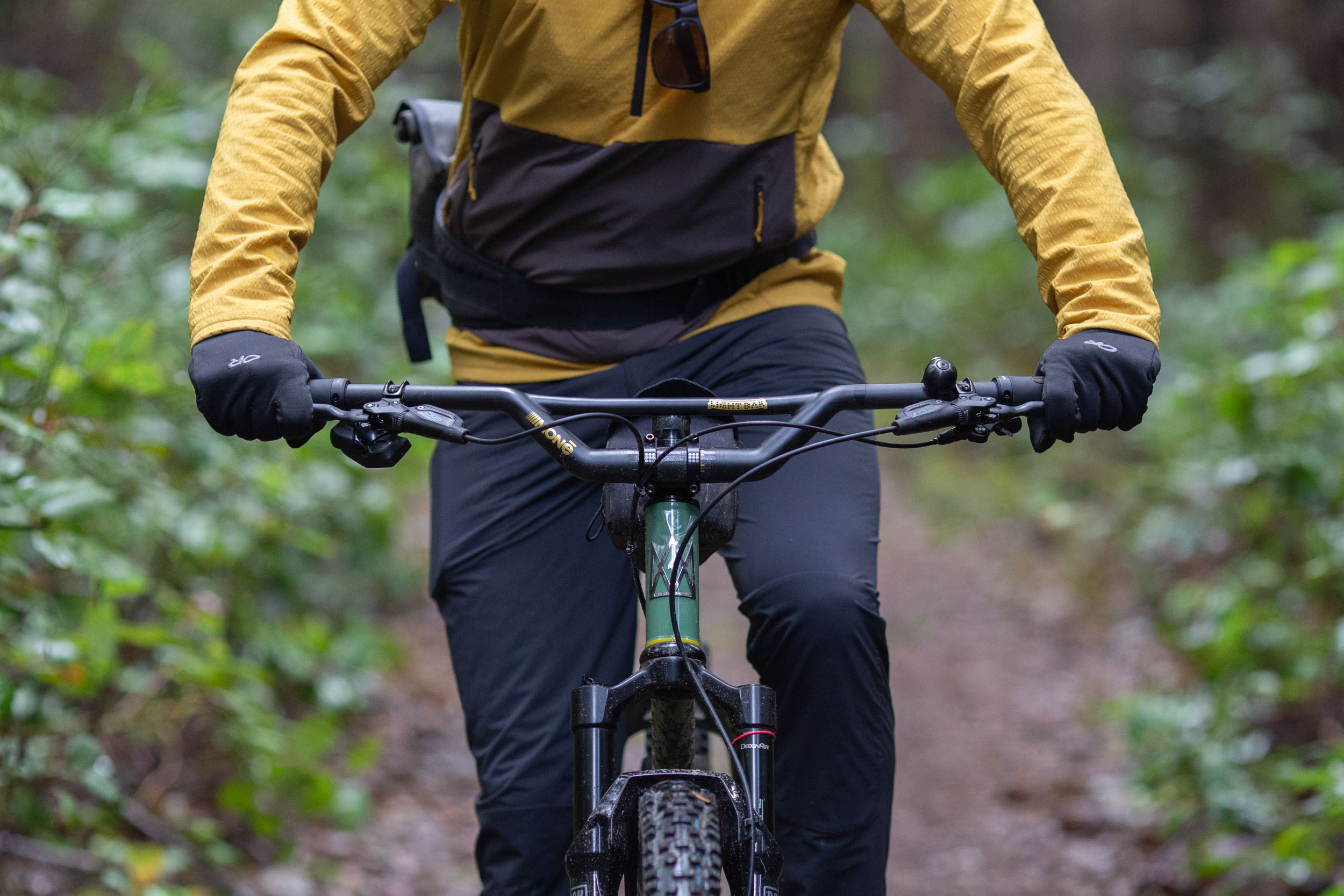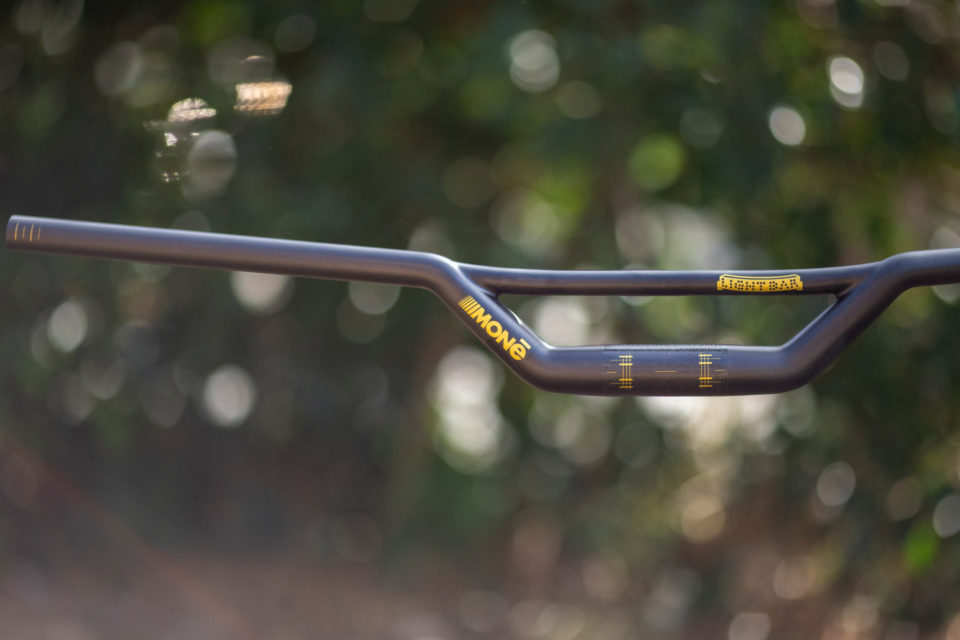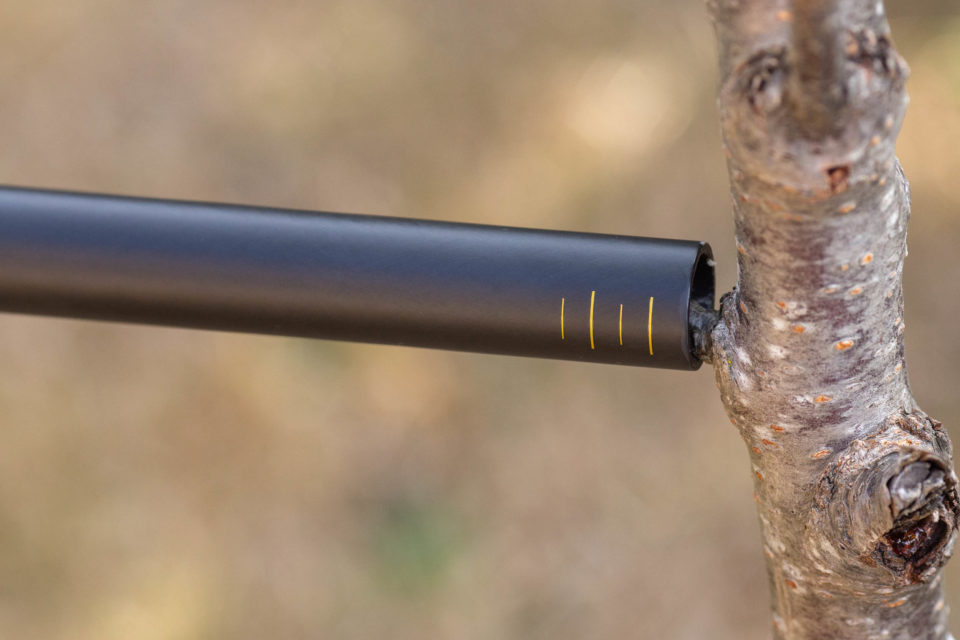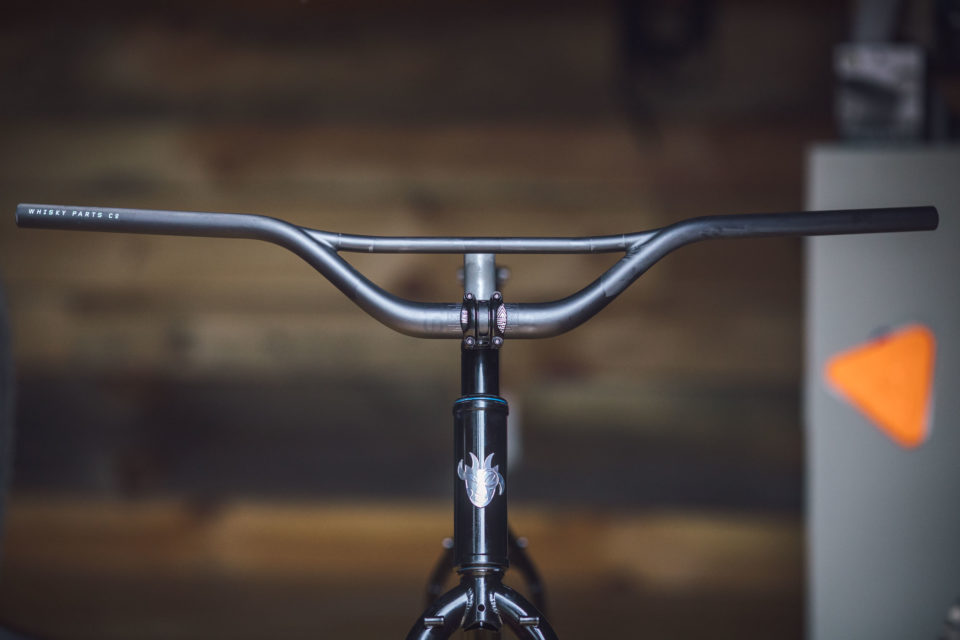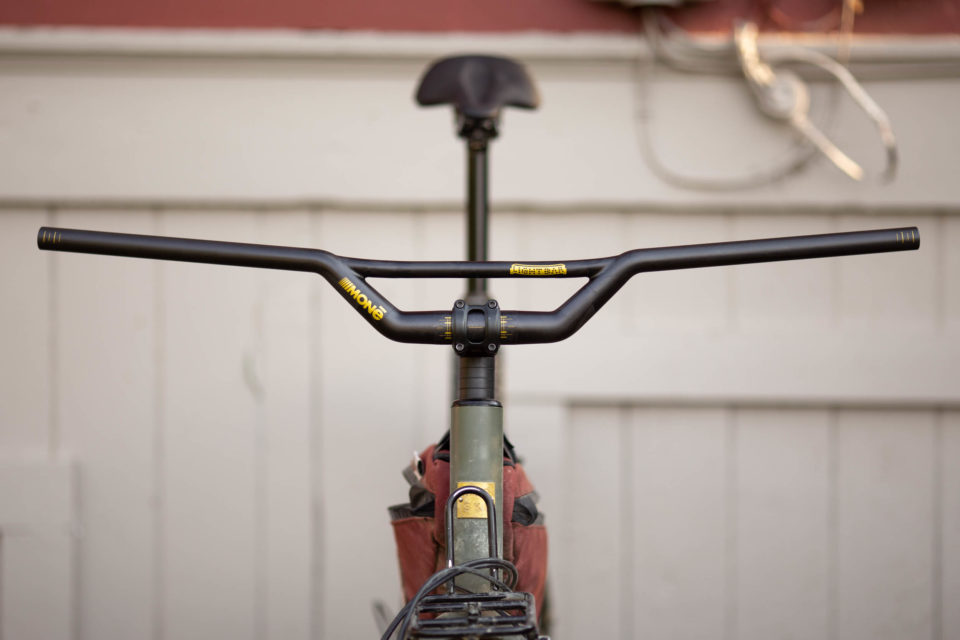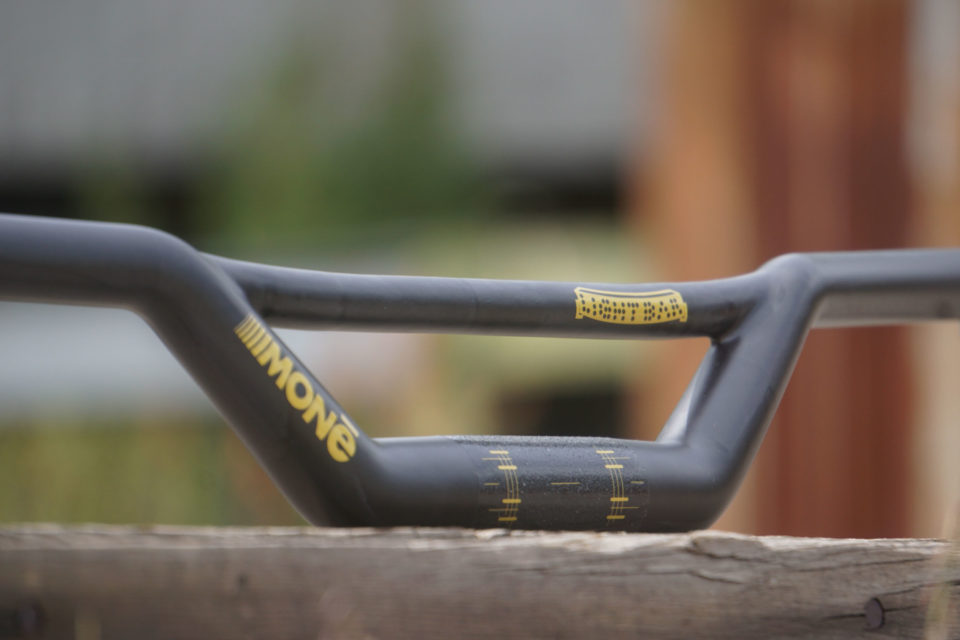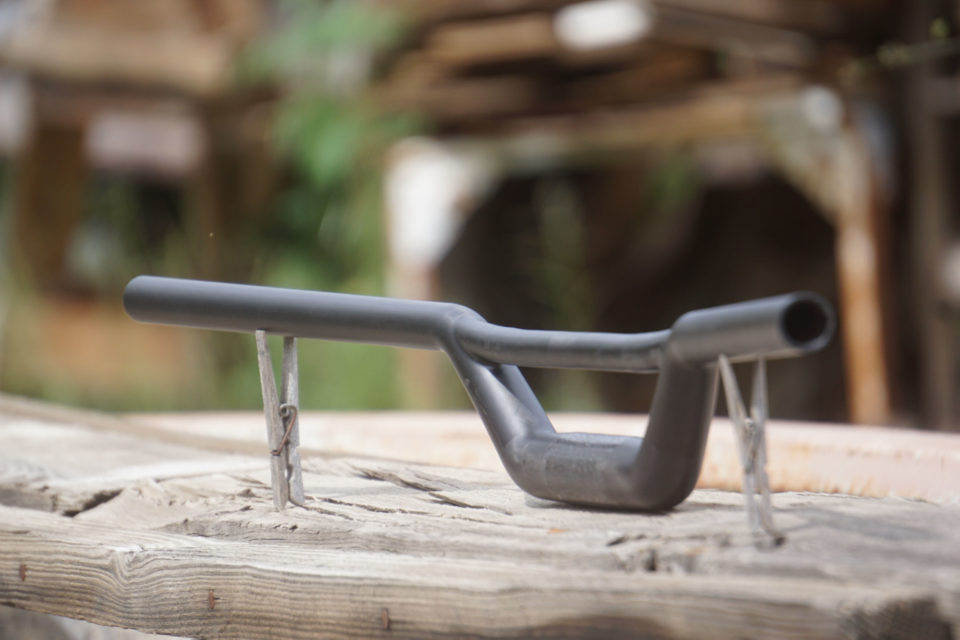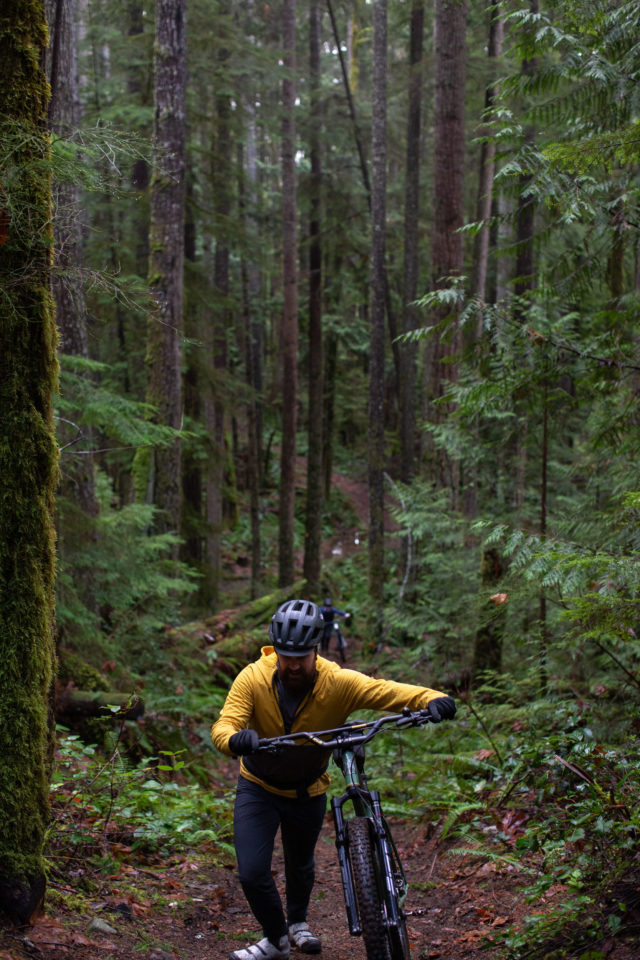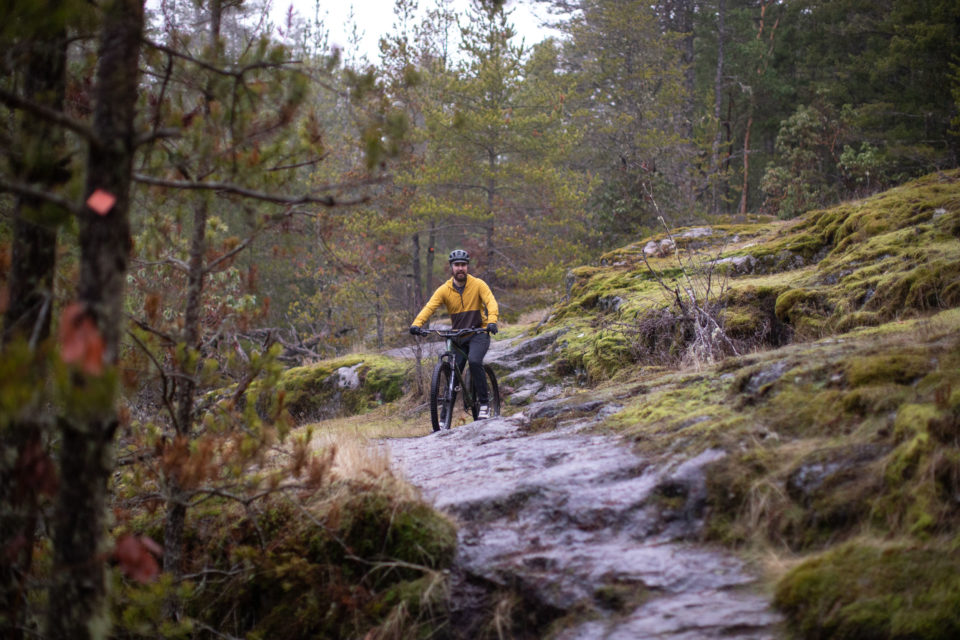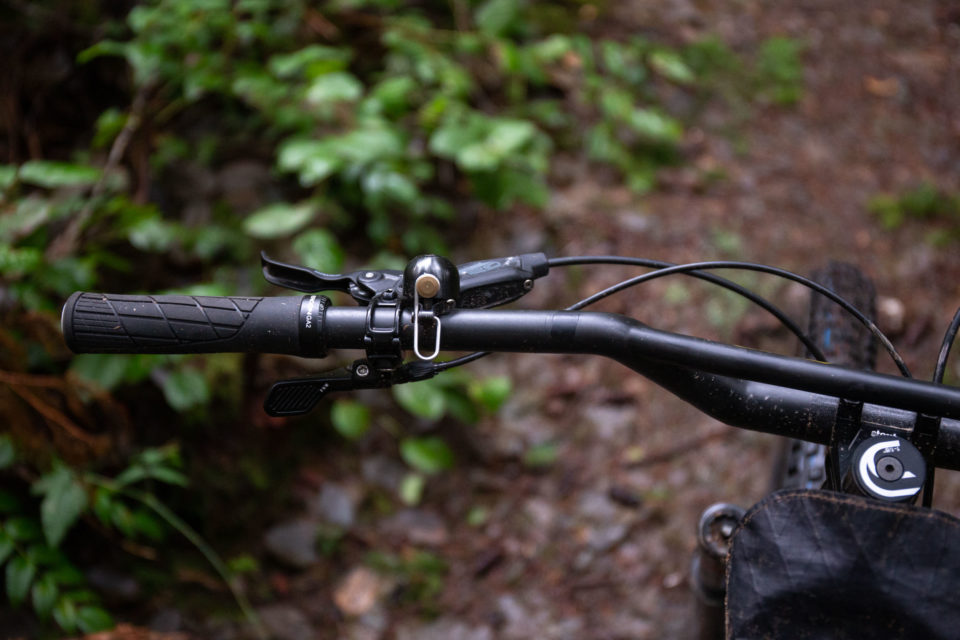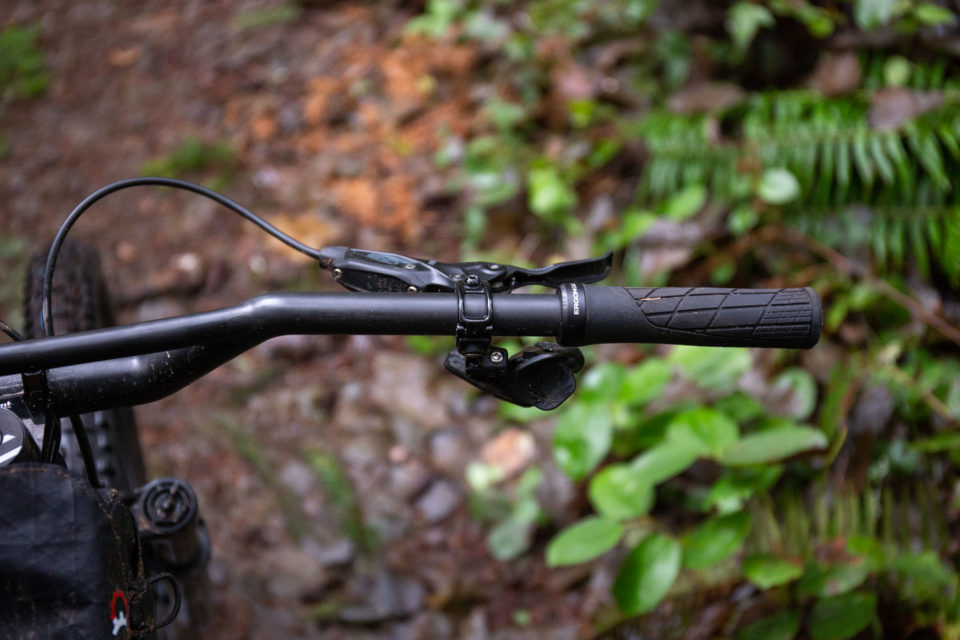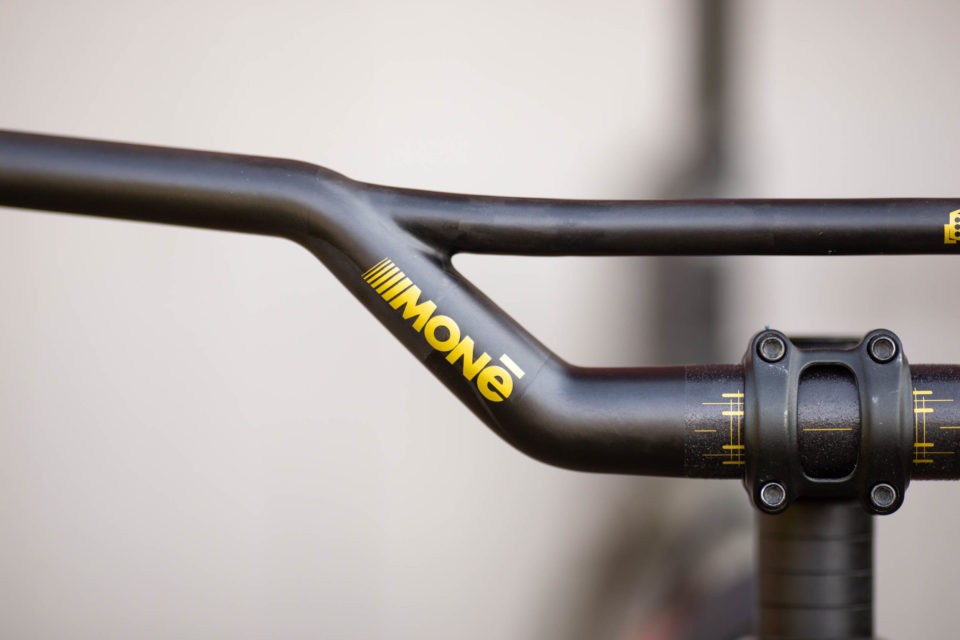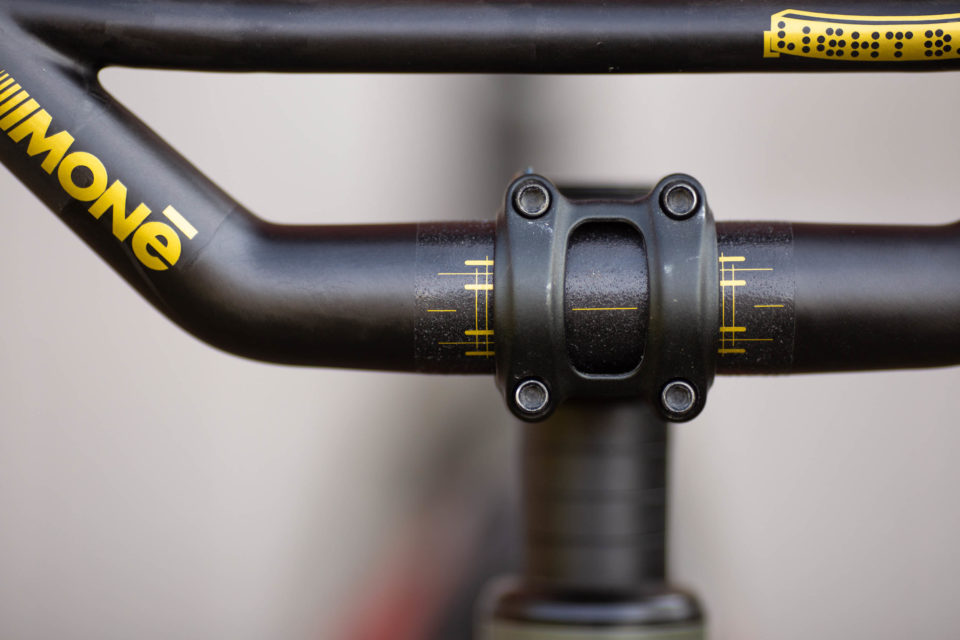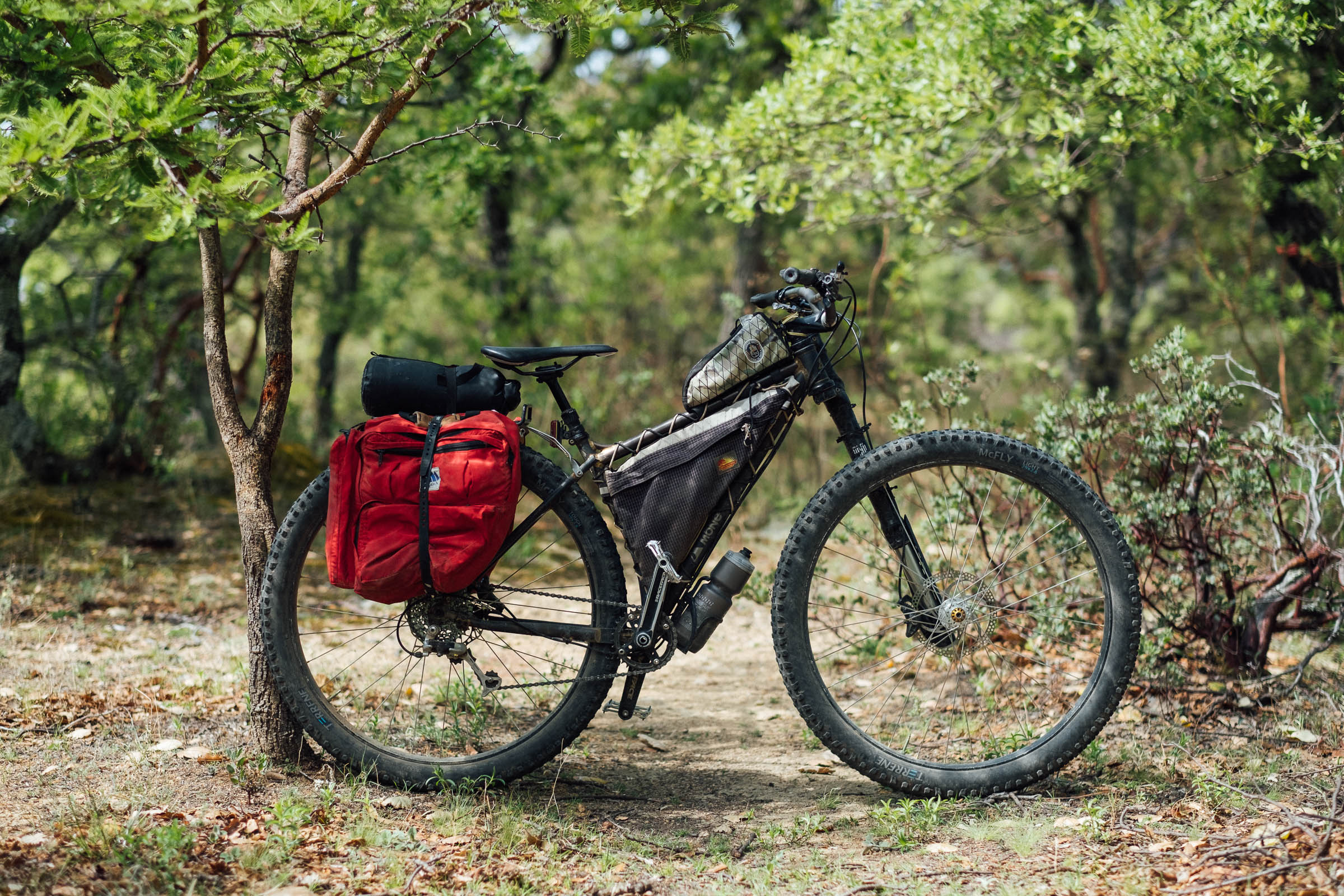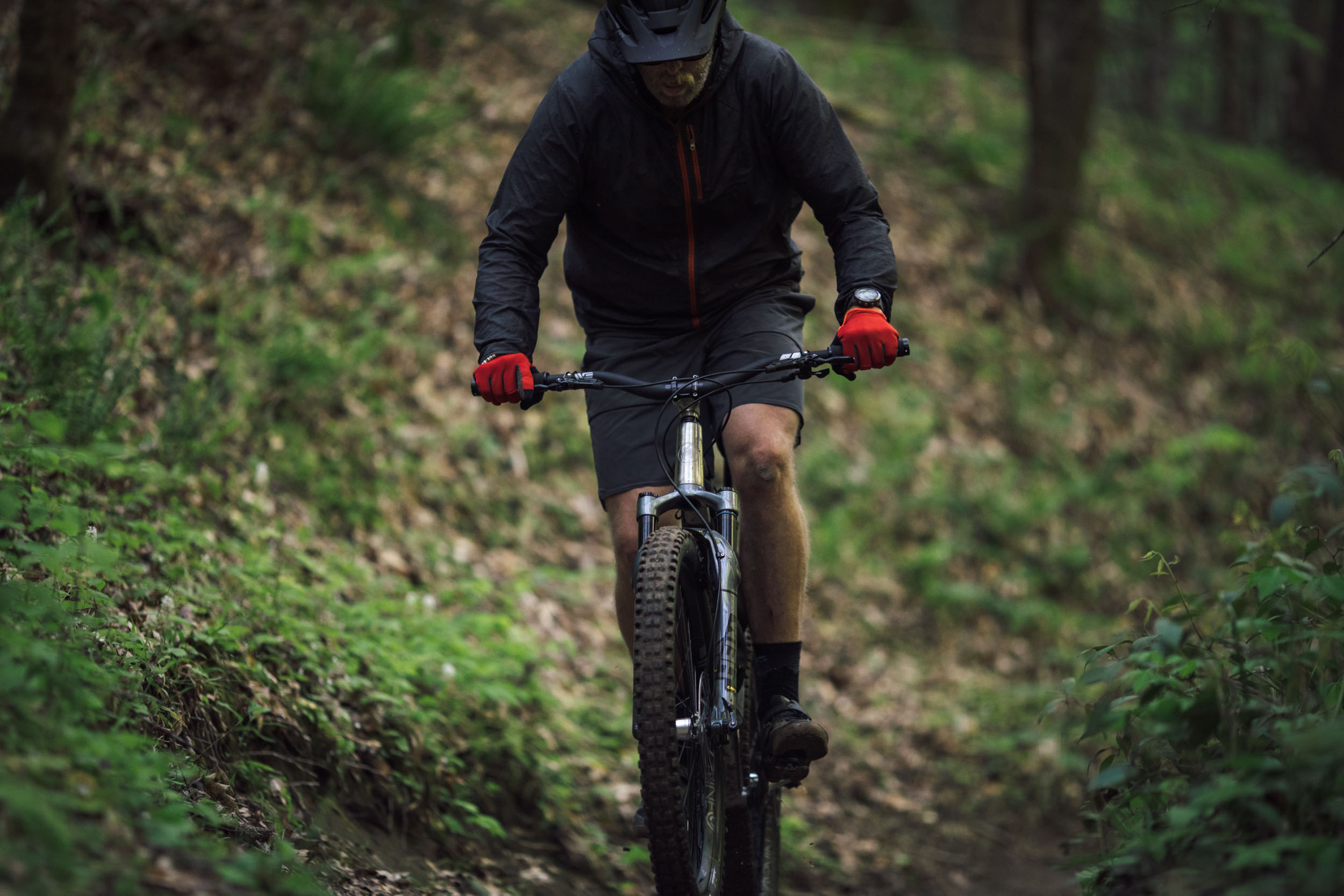Mone Light Bar Review: Sit Back and Shred
Share This
The Monē Light Bar is a wide carbon riser bar designed to pair nicely with modern mountain bikes that could benefit from more rise and sweep. Miles has been testing one out on a variety of bikes to see how it stacks up against other handlebars. Find his thoughts after several months of use here…
Coincidence or not, Monē Bikes and Whisky Components released wide carbon riser bars on the same week in October 2020. At the time, the Whisky Milhouse was about to hit the shelves, and Monē moved quickly to open up the first preorders on the Light Bar. Unlike Whisky, who had already figured out the carbon handlebar manufacturing game, Monē was in new territory, and the costs of purchasing tooling in Taiwan, designing and testing nine different samples, and having a small batch made were adding up. They decided to open up preorders for 25 handlebars, and 16 months later (September 2022), they arrived at Monē Bikes headquarters in Silver City, New Mexico.
For anyone wondering what the big deal with carbon riser handlebars is, there are two things to consider. First, before Whisky and Monē entered the scene, there weren’t any high-rise carbon bars on the market. Most carbon bars maxed out at around 50mm rise, and only a few options out there were wide enough for bigger riders. The second point is that many mountain bikes have short head tubes or short stack heights, and while that’s all good for aggressive trail riding, it’s not what many of us are after for multi-day bikepacking. A handlebar with more rise and sweep can have a significant effect on your riding position, transforming many bikes into less aggressive, more bikepacking-friendly rigs.
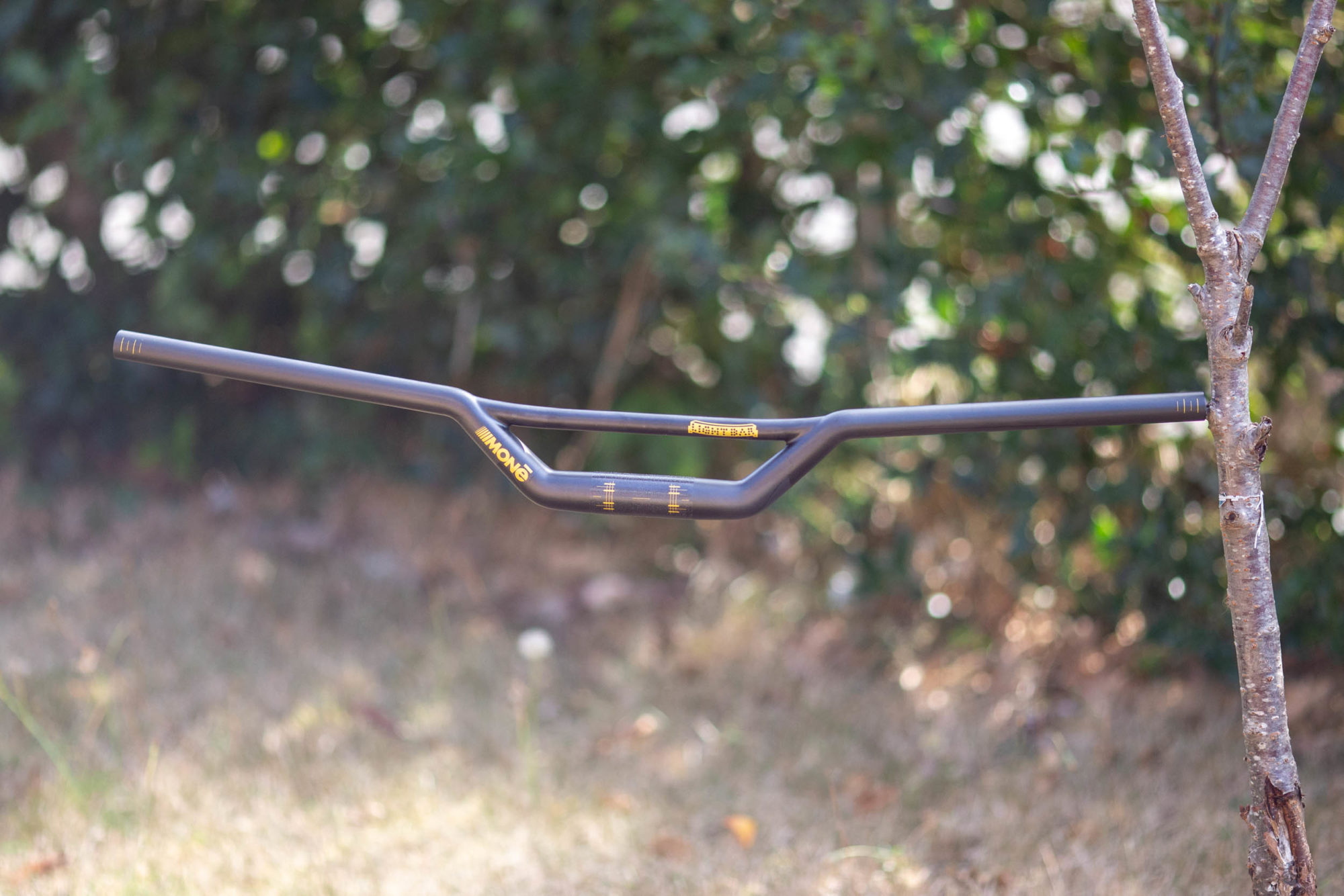
Milhouse vs. Light Bar
Although the Milhouse Bar and the Light Bar share the same moto-inspired design and carbon construction, there are some key differences. I see the Light Bar as a slightly toned-down version of the Milhouse. It has the same 825mm width (trimmable to 665mm), but has 4° less sweep, 6.5mm less rise, and the Monē Light Bar is the only handlebar of its kind that passes all DH ISO testing—meaning it’s strong enough to handle anything you throw at it. The Milhouse bar, on the other hand, is rated for what they call Condition 3 riding, which maxes out at drops less than 24″ (61cm) tall. While hucking a loaded bike off two-foot drops isn’t something I do regularly, it’s nice to have the option. Plus, the Light Bar is a few grams lighter than the Milhouse.
The two bars’ profiles are also quite distinct. The Milhouse bar looks more traditional with smooth curves and a large crossbar, whereas the Light Bar has some interesting angles and junctions with a slightly more space-klunker vibe to it. More importantly, the grip area on the Light Bar is larger than that of the Milhouse bar, and the amount of flat clamping space on either side of the stem is also slightly wider, leaving more room for straps and buckles. On the other hand, the increased rise on the Milhouse bar leaves more room under the crossbar, which makes attaching bags or devices slightly less awkward.
| Product | Weight | Width | Rise | Backsweep |
|---|---|---|---|---|
| Whisky Milhouse Bar | 286g | 825mm | 70mm | 16° |
| Monē Light Bar | 280g | 825mm | 63.5mm | 12° |
I’m fortunate enough to have both handlebars in my stable and have been using them for several months. For reference, I’ve been using them on modern hardtail mountain bikes with long top tubes. While they achieve similar goals (higher stack, more backsweep) the slight difference in specs is noticeable while riding. The Light Bar’s more reserved rise and backsweep add comfort without compromising the bike’s intended use. On both the extra-large Otso Voyek and Mason Raw, which have generously long reach (horizontal distance from the center of the bottom bracket to the top of the head tube) numbers, the Light Bar felt like a natural substitute for the more traditional low-rise/low-sweep mountain bike bars they came specced with. On longer rides, having a touch less weight over the front of the bike means a more upright riding position, and some extra sweep seems to put my wrists at a more natural position in relation to the width of the bar.
The Milhouse Bar offers a similar experience, but in a more noticeable way. More rise and backsweep are great for those who need them, altering the resulting riding position in a bigger way than the Light Bar. It might be worth making some comparisons and looking at your bike’s reach and stack specs before making a decision for yourself.

Background on the Light Bar
By Cjell Mone
The Light Bar was born in Fort Collins. It’s no secret that motorcycle handlebars have been used on mountain bikes for years—back to the early days of Mount Tam. But if we fast forward and consider their modern resurgence, I would be looking to the North Link Industrial Park of Fort Collins, Colorado.
Some time ago, I, Cjell Mone, CEO and big boss of Mone Bikes LTD, was interning at Black Sheep Bikes, which at that time consisted of Todd and James. Not long after my tenure at Black Sheep, Todd broke off and started Moonmen Bikes. Besides offering some of the most well-engineered and beautiful titanium frames ever made, Todd started producing his Moonriser handlebar. Apart from one-off stuff from various handbuilders, I point to this as the first semi-production crossbar riser mountain bike handlebar. Todd’s bars were gorgeous with perfect welds and a really nice slightly curved crossbar. At $450, they weren’t cheap, but dammit, I wanted some.
Around the same time, I was kicking around the Black Sheep shop riffing with Sean Burns of Oddity Cycles. We both wanted some Moonrisers. He had previously gone across the North Link Industrial Park and requested a set of beautiful bars from Todd. Todd said, “You make bars; why don’t you make them?” If we’re talking handbuilders IP, I think this is an appropriate path to receiving the blessing of someone who has slightly more claim to an idea than you. No patents or trademarks in the arena, just respect for people doing the same thing you are. As far as bigger manufacturers jumping in, it’s inevitable, but in the world of bespoke handbuilt handlebars, I feel our integrity has been maintained.
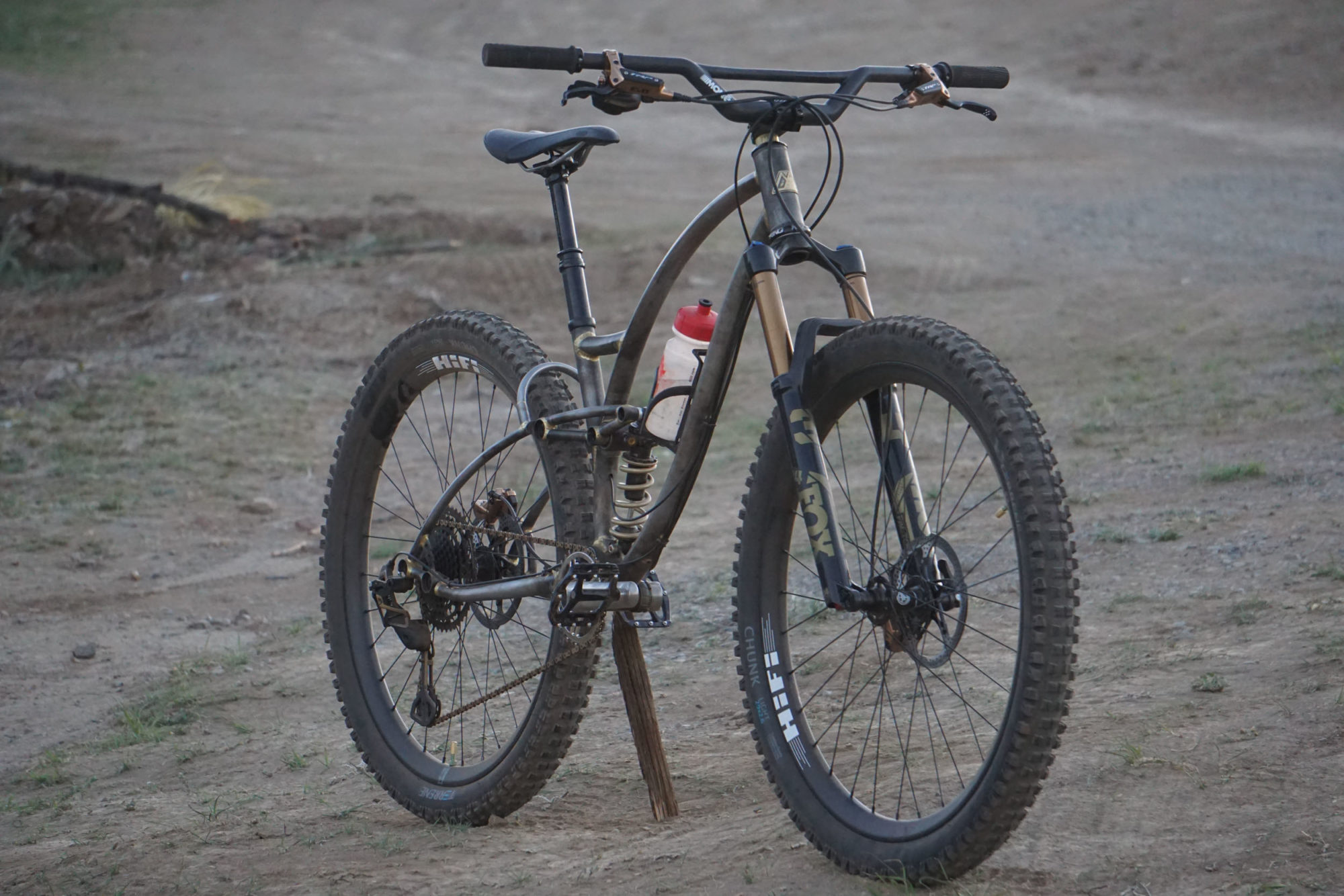
Sean and I brainstormed a bit about what shape the perfect riser bar would be and came up with the OddMonē. Get it? If I’m being fair, I can’t claim any more stake to these bars, other than, “Hey Sean, make ‘em 15 degree sweep, over 800mm, and make them look cool.” Since then Sean, bending wizard he is, has bent all the blank OddMonēs we have ever produced. I simply braze and have my buddy Karl finish them. Sean has a welded steel and Ti version that he also calls the OddMonē which can be confusing for some, but he’s just being a sweetie and saying that I have some claim over the design.
Anway, fast forward hundreds of brazed steel riser bars later. It was White Mike of KC who almost made me sign an NDA before he wispered these words together in my ear. “Carbon Riser Bars.” And that was it. I loved it. Who doesn’t want incredibly light moto MTB bars? I got some drawings done and a few quotes from manufacturers in Taiwan, which isn’t necessarily the cheapest place to have handlebars made, but the best place I knew of.
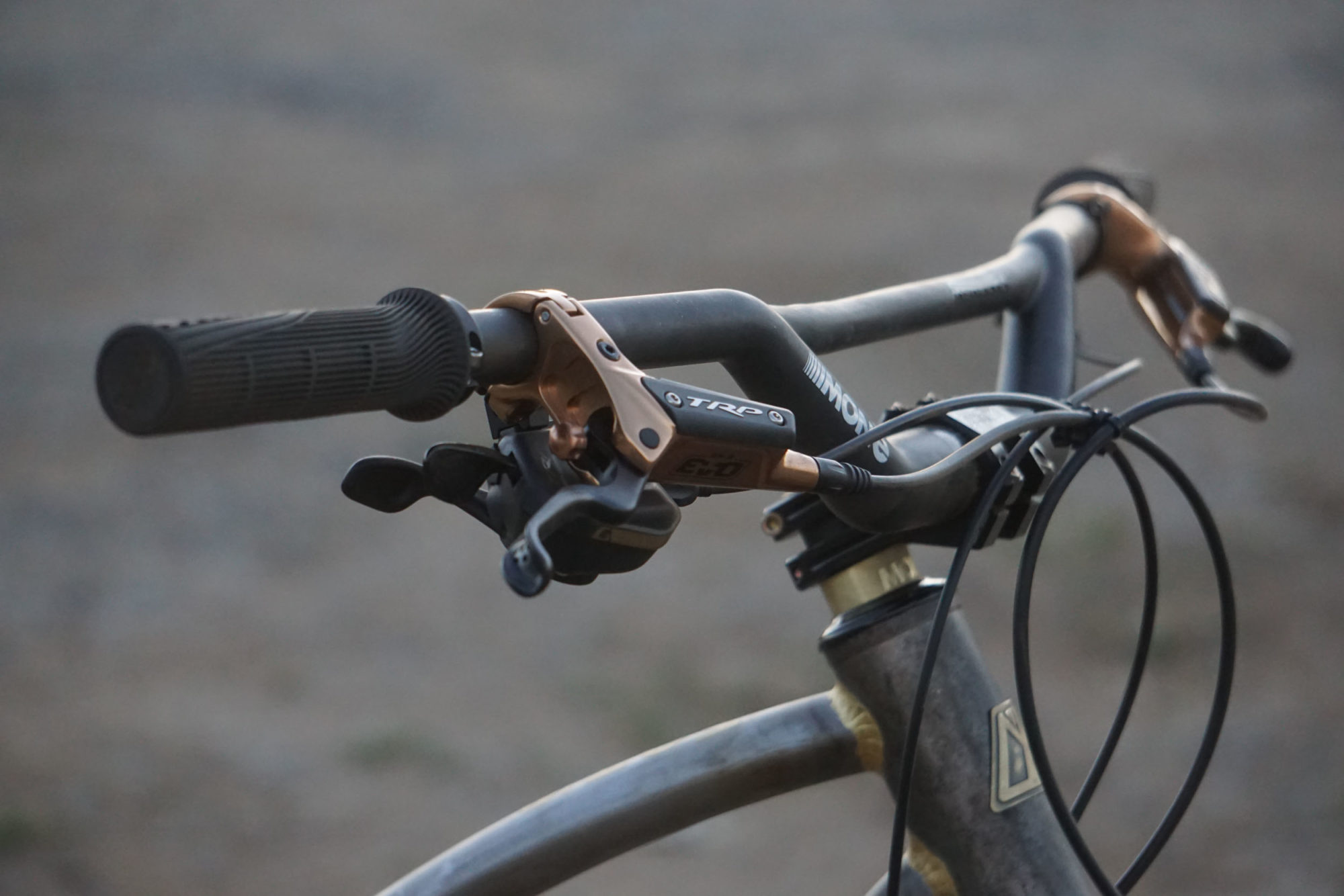
There are lots of different ways to go about the design of a riser bar. Let’s call these design choices a spectrum of cruisy-ness. The super cruisy end, you’d have a lot of rise and a lot of sweep. On the more aggressive end of things, you’d have a bar that resembles the flat-ish bars that come specced on today’s mountain bikes. I wanted something that aimed in the direction of the aggressive end of things, where a person might be more interested in the lightweight benefit of the bars. I already make a very cruisy 25 degree, 4″ rise brazed steel bar that’s perfect for Schwinns and dad bikes where weight isn’t as much of a concern. I wanted to go to the other end of the spectrum for our Light bar.
For the Light Bar, I wanted it to have about 30% more sweep than a traditional mountain bike bar and to be about 30% taller. For the math nerds, we’re looking at 12 degrees of sweep and 64mm of rise with a 31.8 clamp and 825mm of width, with long straight grip sections that make it trimmable to 665mm. I also wanted a box section that was slightly rocked back in the clamp to match the headtube angle of modern bikes. In my opinion, all this makes a very user friendly and comfortable version of a bar that could be used on a full-suspension mountain bike, a trail-oriented hardtail, or a weight-conscious bikepacking rig. Because it’s an aggressive MTB handlebar with a comfort bend, it can also find high uses on tracklo-cross builds, or weight-conscious builds that are looking for a rad handlebar.
The carbon riser bar with crossbar is a little trickier than a normal carbon bar. It requires a full mold as it can’t just be wound like a typical carbon bar. Without getting into specifics, a carbon mold for a handlebar comes in around new Honda Civic money. A fairly large stretch for a guy making bikes in a van, but a gamble I can get behind. White Mike bowed out with the arrival of his first child, so this Honda was fully Monē backed.

The thing about the carbon manufacturing process is that the mold is cut directly from your cad files, so exactly as I had drawn it is exactly how it came. What a trip. I wanted the bends to be a tiny bit sharper than we got in steel, and boom, there they were. I also wanted tiny fillets where the crossbar met the main bar, and wouldn’t ya know it, they were exactly as I had drawn. A perfect taper from the 31.8 clamp to the 22.2 grip. The computer and CNC make it so. I was really blown away with the quality of the bars and the ability to recreate the computer drawings exactly.
My partner Erika came up with the Light Bar logo. It’s in the form of a lightbar you might see on a 4×4 truck, cause we’re just that dang clever. The samples came gloss black which was hard to see on the matte black carbon, so we went with gold for production—the color of brass for the finals. Since the samples were all ISO tested to downhill spec, I ordered as many as possible, 30 handlebars. Those lucky folks got their bars relatively quickly. Then, the main order of just over 100 bars took 18 months, a result of pandemic supply chain woes. The sales of the 30 bars defrayed some of the civic cash I put up, but 18 months makes an ROI that is a bit difficult to justify. All that to say, $312 isn’t cheap, but no one here at monē HQ is getting rich. We just have the privilege of providing and riding some of the raddest handlebars on the planet.
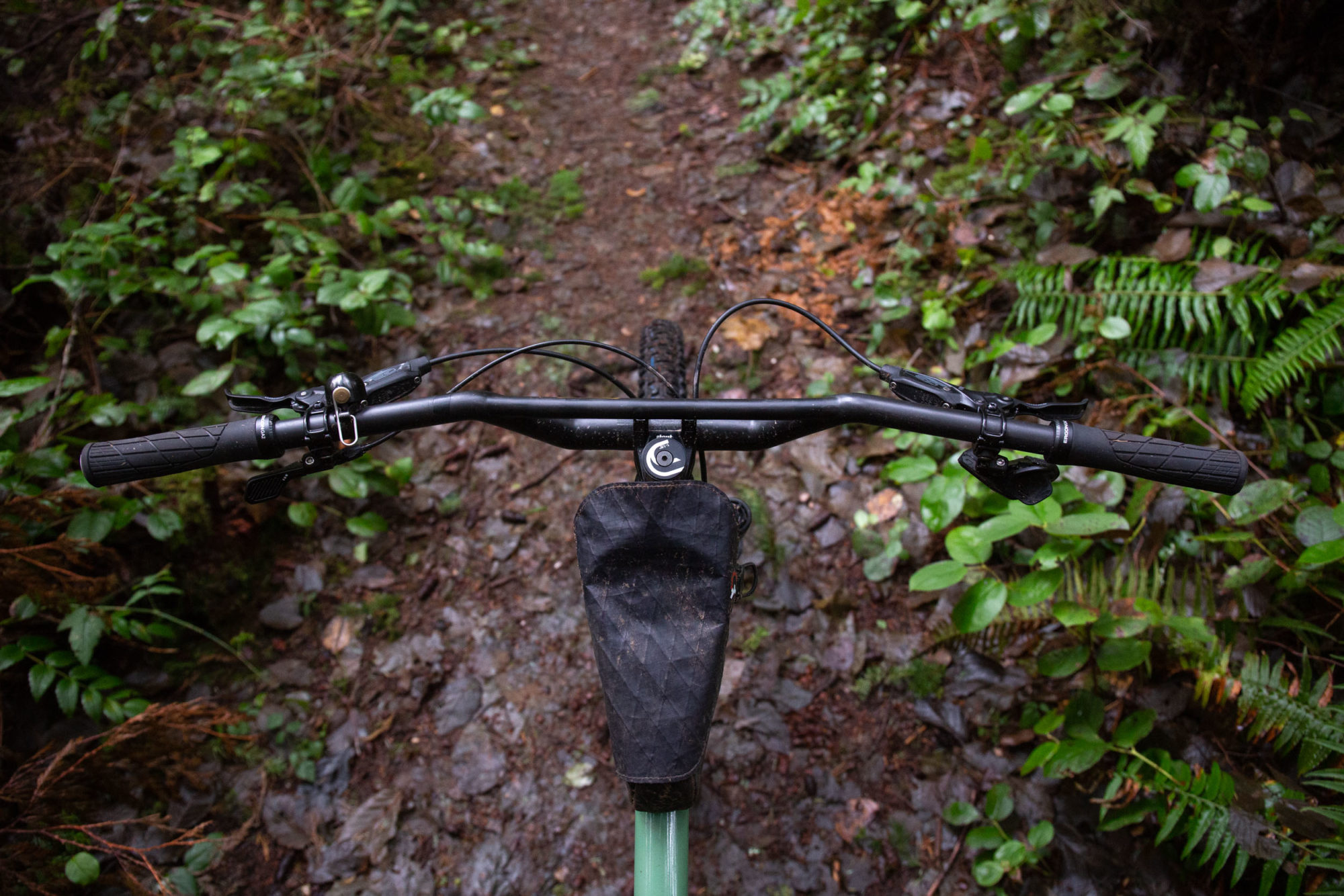
Ride Feel and Benefits
Some people I speak with say they can’t tell the difference between an aluminum handlebar and an expensive carbon one. Personally, I think a high quality carbon handlebar makes a world of difference on long, rough rides. Ever since picking up my made-in-Canada We Are One Da Bar in 2019, I’ve been disappointed by many alloy handlebars. I find that quality carbon bars, including the Monē Light Bar, dampen vibrations, offer stiffness and control, and flex naturally for more comfort. Reduced fatigue while bikepacking means more comfort over long distances and fewer chances of circulation issues or numbness–two considerations that are near and dear to bikepackers.
Another unexpected benefit of riser bars is the ability to reduce or completely eliminate headset spacers under the stem, lowering the handlebar closer toward the headtube of the bike. In turn, this lowers bikepacking bags that secure to the handlebar, keeping the weight low and tight to the bike. I’ve never been one to slam my stem, mainly because I’ve always preferred a slightly more upright riding position, but it feels good to hang with the cool kids sometimes. On the other hand, the crossbar and various angles won’t play well with all bags, depending on where and how they attach to the handlebar.
Pros
- Just the right amount of rise and sweep for long-distance trail rides
- Impressively lightweight
- Wide and comfortable
- Rated for downhill-style riding
- Lowers some handlebar bags
Cons
- Expensive, but justified
- Crossbar can get in the way
- Small order numbers could mean long wait times between availability
- Material: Carbon Fibre
- Weight: 280 grams
- Place of Manufacture: Taiwan
- Price: $312 USD
- Manufacturer’s Details: MoneBikes.com

Wrap Up
I’m guessing there aren’t many folks out there who will jump on a $300 handlebar. It’s an expensive upgrade and fairly a niche one at that. But for those of us who are sold on riding long mountain bikes for trail riding, bikepacking, and beyond, they could make sense. As someone who has never been a huge fan of aggressively swept back handlebars, I’ve found that the 12° backsweep dials back the length of the cockpit without restricting my ability to ride technical terrain. The rise and width play nicely with modern trail bikes, they’re comfortable and lightweight, and I doubt I’d be able to break them even if I tried. It’s really cool to see a small company like Monē come out with a carbon moto riser bar, especially because it’s unique and well-executed compared to what’s currently available.
Related Content
Make sure to dig into these related articles for more info...
Please keep the conversation civil, constructive, and inclusive, or your comment will be removed.






